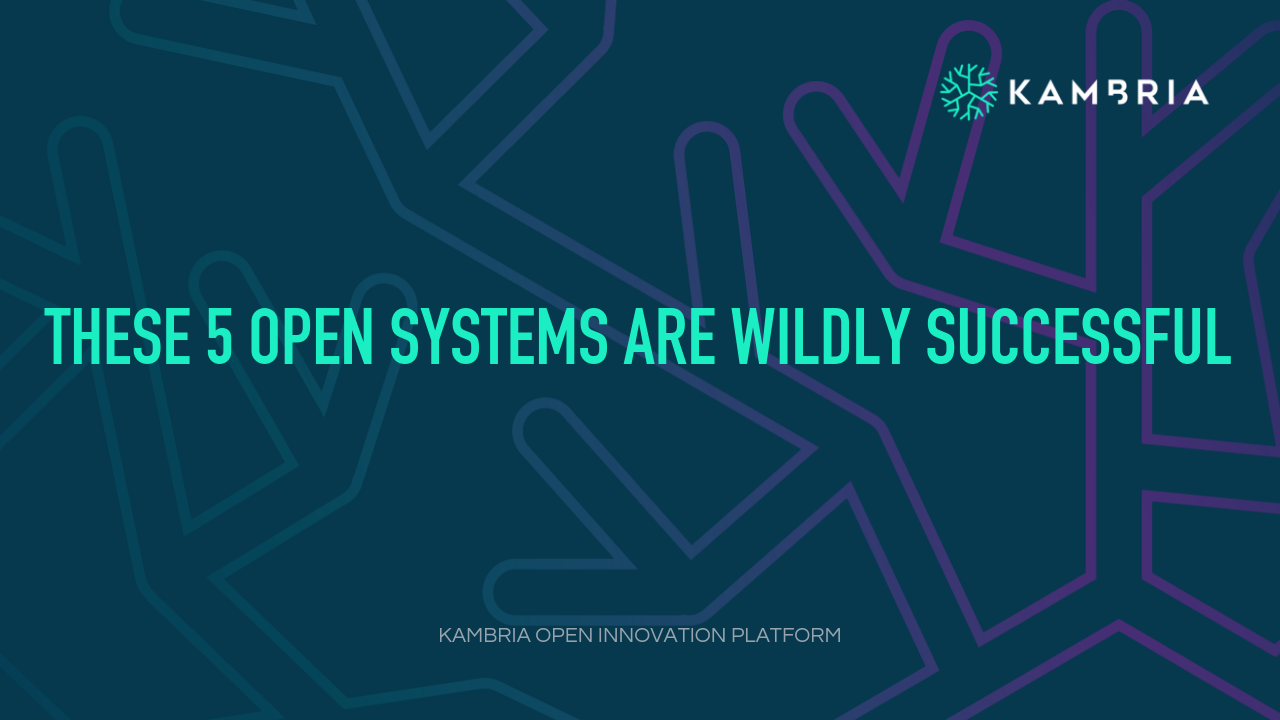As the world moves towards “the fourth industrial revolution”, the emergence of open innovation has become of increasing importance. Traditionally, organizations have relied on internal R&D resources and human capital to produce innovative products and services. While this traditional form has resulted in a significant amount of groundbreaking and life-altering technology, modern-day innovation has moved towards an “Open innovation” model. Let’s review what open innovation is and highlight 5 open innovation systems that are wildly successful.
What is Open Innovation?
Open innovation is the utilization of resources and knowledge from external sources as a means to drive and develop innovation. Open innovation relies on multiple third parties co-operating in order to produce innovation.
Open innovation has several key advantages over traditional innovation:
- Scalability and efficiency: The very nature of open innovation is conducive to scale and efficiency, given the assortment and distribution of key project roles to different collaborators, which allows companies specialized in one field to maximize their output in their area of expertise, while still deriving the benefits from the work produced by other collaborators in the project.
- Technological improvements: Open Innovation encourages numerous stakeholders to share their technologies amongst each other, which in turn allows companies to build on top of existing infrastructure and protocols rather than building from their own internal resources. This leads to enhanced technological specialization.
- Real-time feedback: Having multiple collaborating parties allows for organizations to receive critical feedback from multiple avenues that would otherwise be internalized in traditional R&D models.
Huawei & Open Innovation
Despite humble beginnings, Huawei has quickly become one of the world’s leading technology companies. Traditionally, companies from the US, South Korea & Europe have dominated the smartphone and telecommunications markets with companies such as Apple, Samsung & Nokia leading in the space. Huawei was lagging considerably behind established players and as a consequence needed to accelerate their development. In order to do this, Huawei relied on open innovation to catch up to, and in some aspects, even surpass its competitors.
A classic example of Huawei’s utilization of open innovation is seen in their approach to developing their own IOT cellular solution called “LTE-M”. Huawei was fully aware that time was of the utmost importance for the development of the LTE-M project and that the company’s own resources would be insufficient to develop this solution.
As a result, Huawei decided to collaborate with a number of companies each focused on a specific part of the project including; design, prototyping, and development. The companies Huawei selected as collaborators were aligned in interests, lacked commercial conflicts of interests and believed in the vision of the LTE-M project. The end result of the collaborative development was the introduction of Huawei’s new technology within three years, which according to estimates shaved two years off a likely five-year development timeline.
Hewlett Packard & Open Innovation
Realizing the benefits of open innovation, In 2011 Hewlett Packard launched its own Open Innovation Center. The HP Innovation lab encourages collaboration between enterprise and academia by publishing a number of proposals related to R&D and product development with the goal of establishing collaboration between multiple parties.
One of HP’s most successful open innovation efforts was the development of “Open Circus” – an open cloud-computing research platform designed to enhance research and knowledge in the field of cloud computing. Open Circus is a great example of open innovation as stakeholders in the project include: enterprise (HP, Intel, Yahoo), academia (Georgia Tech, University of Illinois, Guangzhou Research Institute) and government (US, Singapore, Germany).
The benefit derived by HP in their open innovation projects is that they are able to gain insight from multiple knowledge centers -- such as localized data from around the world -- they would not have been able to access if the programs were run internally.
GE & Open Innovation
General Electric has benefited significantly since the company’s introduction and application of open innovation projects. Despite GE’s size, finding efficient solutions for research and product development is difficult relying solely only internal resources. GE quickly identified the benefits associated with open innovation and adopted a number of open innovation projects.
“We believe openness leads to inventiveness and usefulness.”
One of GE’s most successful implementations of open innovation is their “FirstBuild” project – an open-source hardware micro-factory. The FirstBuild project is a collaborative effort between GE, Local Motors and engineers at the University of Louisville. FirstBuild was established in order to explore potential areas of disruption in manufacturing.
GE believes that open innovation allows for a more diverse range of intellectual input that would otherwise be focused solely on engineering. As a consequence, the development of products can be fast-tracked to market.
Samsung and Open Innovation
Much like Huawei, Samsung has leveraged open innovation in order to develop its products at a faster rate than internal resources allow. Samsung has divided its open innovation into a number of areas:
- Global Research Centers
- Collaboration between academia and industry
- Global consortiums
Samsung’s belief is that implementing an open innovation strategy allows for a small group of collaborators to act as a small enterprise that is free in terms of mobility, autonomy, and design which would otherwise by handcuffed by internal processes. Samsung has used open innovation to enhance its research in IOT (Internet of things) product development by collaborating with multiple stakeholders.
Haier and Open Innovation
Haier, a Chinese electronics and appliance producer, believes that the days of “traditional manufacturing” are over and that “micro-enterprises” in the form of autonomous internal or external units will be utilized more and more to produce goods that are currently produced in an inefficient manner. Haier’s core ambition is to develop a collaborative system with minimum gaps or friction between suppliers, customers, innovators and other stakeholders.
In order to facilitate this, Haier introduced their HOPE (Haier Open Partnership Ecosystem) in 2013. Haier’s HOPE platform encourages technology, research and innovation exchange between multiple parties. HOPE encourages the posting of problems and case studies requiring solutions from what is a largely public portal. This large public portal gives multiple stakeholders the chance to provide solutions for problems and quickly gain feedback on numerous technical and developmental issues. This gives Haier a significant advantage over competitors as there is a constant feedback loop between the company’s customers and collaborators.
With the efficiencies achieved by open innovation, it is likely that we will see more and more projects assembled in a collaborative fashion.
Kambria and Open Innovation
At Kambria, open innovation means creating “a more distributed, more participatory, more decentralized approach to innovation.” This approach leads to a fundamental insight that how we innovate is as important as what we innovate on. If we examine the current innovation model, we can see the scale of waste and inefficiencies.
Kambria is the first decentralized open innovation platform for AI & Robotics. Using our platform, anyone can collaborate in researching, developing and commercializing innovative ideas and get rewarded fairly for their contributions. Through partnerships with government agencies, top universities and leading companies, Kambria is dedicated to building a sustainable open innovation ecosystem to change the way we innovate and to accelerate advanced technology development and industry adoption.
Our open innovation ecosystem includes:
- The Kambria Global Innovation Fund facilitates collaboration between researchers and companies worldwide.
- The Kambria Open Innovation Hub is a global network of physical R&D labs that provides organizations with world-class solutions to accelerate their AI and robotics innovations.
- Hackathons and K-prize Challenges bring together companies and innovators to create advanced technology solutions through K-prize bounty challenges on our platform and in-person hackathons.
- Kambria eduKATion will offer expert-led courses with cutting-edge training in AI, Robotics, and blockchain development. Kambria partners with top educational providers around the world to educate anyone interested in learning about advanced technology. Learn on-demand or in-person.
If you are interested in learning about Kambria's open innovation platform, click here to read more.
Open Call for Writers
Do you like writing about tech topics like this one? Then join the Kambria Content Challenge and share your insight and expertise with our growing developer community. You could receive over $200 for the best submission. For complete details about our Content Challenge, click here.














